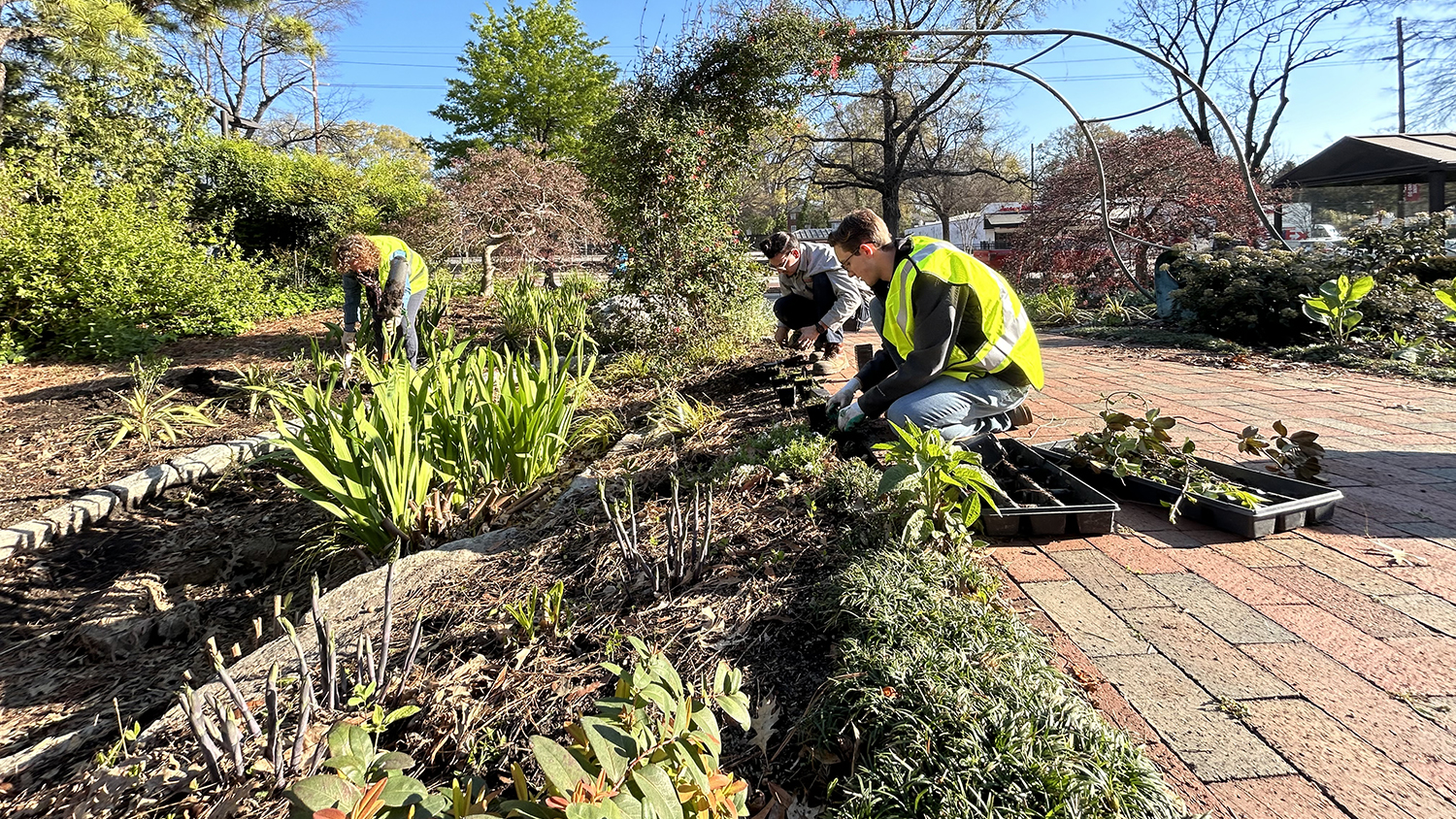Fred Hain receives Order of the Longleaf Pine
Media Contact: Dr. Fred Hain, Alliance of Threatened Forests, 919-515-3804 or fred_hain@ncsu.edu
Dr. Fred Hain, a retired NC State University entomology professor, has joined the long list of distinguished North Carolinians to receive the Order of the Longleaf Pine award.
Hain received the honor Sept. 30 during his retirement celebration. Initiated in 1965, the Order of the Longleaf Pine is one of the highest state awards a person can receive, given by the Governor of North Carolina.
The award could not have been more appropriate for Hain, who has dedicated his career to researching forest pests, particularly of evergreen trees.
Hain began his career as a forest entomologist in the 1960s, researching the pine bark beetle in North Carolina. In the 1970s, he began research on the balsam woolly adelgid, a tiny invasive insect that devastated Fraser fir forests in western North Carolina, particularly around the Great Smoky Mountains National Park and Mount Mitchell. He began researching the hemlock woolly adelgid in the late 1990s, after the insect was reported in North Carolina.
Hain’s forest entomology lab began experiments on breeding trees that could be resistant to the pests, giving other pest control strategies a chance to act before the trees succumbed to the insects. In 2007 he created the Alliance for Saving Threatened Forests (http://www.threatenedforests.org), a nonprofit dedicated to breeding Fraser firs and hemlocks that are resistant to the adelgids.
As an entomology faculty member in NC State’s College of Agriculture and Life Sciences, Hain taught hundreds of students in classes that delved into the worlds of forest entomology, ecology and invasive species. Hain mentored dozens of graduate students, in various degrees of study. Each fall, he would start the academic year by taking the new entomology graduate students to the mountains of North Carolina to observe insects in their native settings.
He hoped to give students a sense of the interaction between insect, host, predator, prey and the environment. According to Hain, many students looked back on that trip as a reinforcement of their career choice as they learned about species characteristics and interactions.
His retirement marks the beginning of a dedicated effort to research host resistance in hemlocks and firs and to strengthen the collaboration within the Alliance of Threatened Forests (ASTF). The long-term goal of the alliance under Hain’s leadership is to restore hemlocks and firs in their natural habitat, to provide resistant firs for the NC Christmas tree industry and to provide resistant hemlocks for the NC ornamentals industry. ASTF is hosting a one-day symposium reporting on host resistance research to the hemlock and balsam woolly adelgids. The conference will take place Oct. 26 at the Haywood County Extension Center in Waynesville, NC. It is open to the public; for details see http://www.threatenedforests.org.
Written by: Rosemary Hallberg, Communication Specialist, Southern Region IPM Center, 919-513-8182 or rhallberg@sripmc.org


